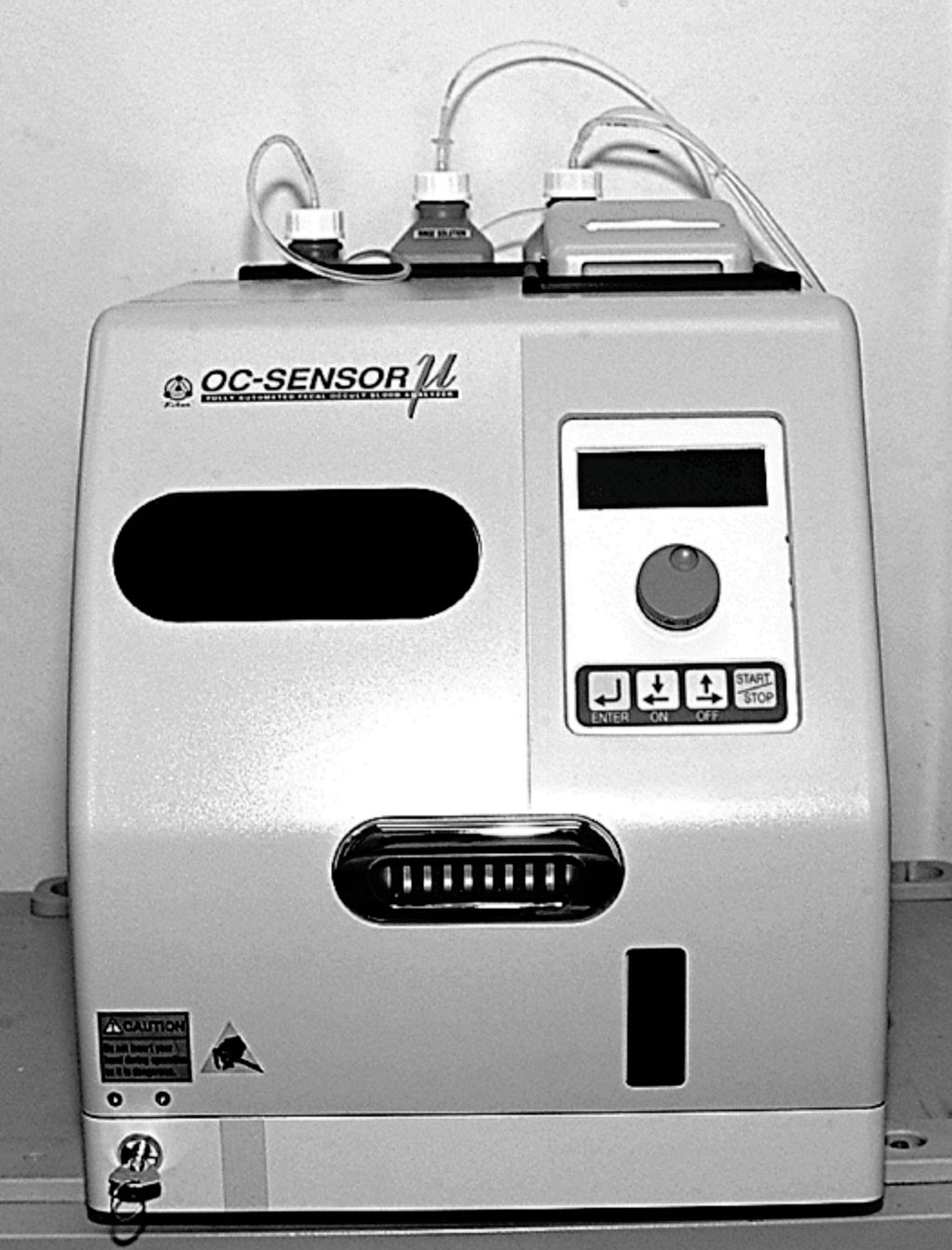FIT Hemoglobin Predicts Risk of Advanced Neoplasia
By LabMedica International staff writers
Posted on 10 Nov 2017
Colorectal cancer (CRC) screening using quantitative fecal immunochemical tests (FITs) is rapidly gaining ground worldwide and FITs are invariably used in a dichotomous manner using pre-specified cut-off values.Posted on 10 Nov 2017
Hemoglobin (Hb) concentration in fecal immunochemical test (FIT) results during the first round of colorectal cancer (CRC) screening is an independent predictor of risk of advanced neoplasia (AN) and might be used in designing personalized strategies for CRC screening while reducing unnecessary repeat tests.

Image: The OC-Sensor apparatus used for the quantitative fecal immunochemical test screening for colorectal cancer (Photo courtesy of Eiken).
Gastroenterologists at the Erasmus MC University Medical Centre (Rotterdam, The Netherlands) analyzed data collected from a population-based study of 9,561 average-risk subjects (50-74 years old) in the Netherlands who were offered four rounds of FIT screening for CRC from November 2006 through December 2014. They analyzed data from 7,663 participants screened at least once and found to have a negative FIT result at baseline (below the cut-off value of 10 μg Hb/ gram of feces [G]). Participants were followed for a median of 4.7 years (interquartile range, 2.0-6.1 years).
The investigators found that participants with two consecutive FIT Hb concentrations equal to or greater than 8 µg/G had a 14-fold increased risk of AN compared to those with baseline concentrations of 0 µg/G. Multi-variate hazard ratios increased from 1.2 for participants with FIT Hb concentrations 0–2 µg/G to 8.2 for those with concentrations 8–10 µg/G. This rising cumulative incidence of AN based on elevated FIT Hb levels was more prominent for Hb concentrations between 4 µg/G and 10 µg/G.
The authors concluded that in a population-based study of average-risk individuals with a FIT result below the cut-off value,they associated baseline concentrations of 8-10 μg fecal Hb/G with an increased risk of AN compared with baseline concentrations of 0 μg fecal Hb/G. Baseline and consecutive fecal Hb concentrations are independent predictors for incident AN. This information might be used in designing personalized strategies for population-based CRC screening and reduce unnecessary repeat tests. The study was originally published on July 28, 2017, in the journal Gastroenterology.
Related Links:
Erasmus MC University Medical Centre




 assay.jpg)








